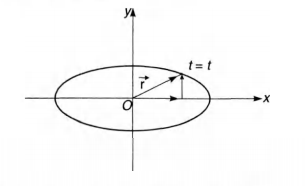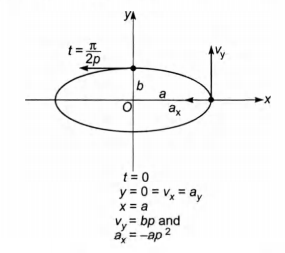Q.
The coordinates of a particle moving in a plane are given by
x(t)= a cos (pt)and y(t)= b sin (pt) where a,b (< a)and
p are positive constants of appropriate dimensions. Then,
Solution:
...(i)
...(ii)
Squaring and adding Eqs. (i) and (ii), we get
Therefore, path of the particle is an ellipse. Hence, option
(a) is correct.
From the given equations we can find
At time t
a and v become zero (because cos /2 = 0)
only v and a are left.
or we can say that velocity is along negative x-axis and
acceleration along y-axis.
Hence, at t = /2p velocity and acceleration of the particle
are normal to each other. So, option (b) is also correct.
At t = t, position of the particle
and acceleration of the particle is
Therefore, acceleration of the particle is always directed
towards origin.
Hence, option (c) is also correct.
At t = 0, particle is at (a,0) and at t = / 2p
particle is at (0,b). Therefore, the distance covered is
one-fourth of the elliptical path not a.
Hence, option (d) is wrong.

